PART I: Summary
Understanding Psychedelics and Consciousness
psychedelics.com
Psychedelics and Consciousness: A Journey Through Science
📖 What’s This Paper About?
This paper explores the fascinating intersection between neurotransmitters, consciousness, and spiritual experiences. The authors examine how brain chemicals, particularly endogenous DMT (dimethyltryptamine), may serve as bridges between our biological existence and deeper spiritual dimensions, potentially explaining mystical experiences and altered states of consciousness.
Why This Matters
Understanding the neurochemical basis of consciousness and spiritual experiences could revolutionize psychiatric treatments for conditions like depression, PTSD, and addiction. The reintroduction of psychedelics into scientific research represents a potential paradigm shift in mental healthcare after decades of prohibition that has stunted progress in psychiatry.
Keep Up with Uncensored Psychedelic Trends
Join our newsletter at Psychedelics Uncensored.
We respect and protect your privacy. By subscribing your info will be subject to our privacy policy . Unsubscribe easily at any time
- Psychiatry lacks objective diagnostic tools, relying heavily on subjective assessments
- The historical ban on psychedelic research has delayed medical breakthroughs
- New studies show promising results for treatment-resistant conditions
Top 5 Takeaways
1. Neurotransmitters as “Divine Tools”
The human brain’s neurotransmitters aren’t just biological components but can be viewed as “divine tools” that facilitate higher states of consciousness, connecting our physical and spiritual dimensions.
2. Endogenous DMT’s Special Role
Naturally produced DMT in the brain may activate during critical life situations, triggering profound altered states of consciousness that resemble spiritual experiences and potentially transforming our perception of reality.
3. The “Happiness Molecules” Explained
Key neurotransmitters like dopamine (reward and motivation), serotonin (mood harmony), norepinephrine (energy and stress adaptation), and GABA (calming protection) work together to create our emotional experiences.
4. Psychiatry’s Twin Challenges
Modern psychiatry faces two significant obstacles: the lack of objective diagnostic tools (unlike other medical fields) and historical restrictions on psychedelic research that have slowed advancement in understanding and treating mental health conditions.
5. The Psychedelic Renaissance
Recent research is rehabilitating psychedelics like psilocybin and MDMA as potentially transformative treatments for conditions like treatment-resistant depression and PTSD, offering new hope where conventional approaches have failed.
The Bigger Picture
This research suggests we may be at a pivotal moment in understanding consciousness and mental health treatment. By reconsidering psychedelics not as dangerous drugs but as valuable tools for exploring the mind, we could bridge the gap between neuroscience and spirituality. This shift challenges our conventional separation of biological psychiatry from spiritual experience, suggesting they may be different perspectives on the same profound reality of human consciousness.
Keep Up with Psychedelic Trends
Get uncensored psychedelic news, events, and updates. Join Psychedelics Uncensored!
We respect and protect your privacy. By subscribing your info will be subject to our privacy policy . Unsubscribe easily at any time
Final Thought
As science returns to studying the “molecules of consciousness,” we may find that the most profound truths about our existence lie at the intersection of biology and spirituality—accessible through the very chemicals our brains naturally produce.
PART II: Complete English Translation
Full Academic Paper Translated from Russian and Armenian
psychedelics.com
MOLECULES OF CONSCIOUSNESS: THE ROLE OF NEUROTRANSMITTERS IN PSYCHIATRY AND SPIRITUAL EXPERIENCES
The human brain is a unique and complex system where neurotransmitters are not merely biological components but may serve as “divine tools” enabling higher states of consciousness. Endogenous DMT (dimethyltryptamine) emerges as a key substance capable of inducing altered states of awareness linked to profound spiritual and mystical experiences. Research suggests that DMT, produced naturally in the brain, may become active during critical life situations, facilitating a transformation in perception. Recent studies also restore the scientific significance of psychedelics, highlighting their role in psychiatry, particularly in the treatment of depression, PTSD, and addictions. This article explores how neurotransmitters and DMT can be viewed as bridges connecting the biological and spiritual dimensions of human existence.
Keywords: psychedelics, neuroscience, neurotransmitters
The human brain is a highly complex biological system in which every aspect of our existence, from emotions to thoughts and actions, is regulated by intricate chemical processes.
Among the many compounds responsible for our mental state, neurotransmitters play a special role. These substances are like “molecules of happiness,” providing balance between emotional, cognitive, and physical well-being. Let’s examine how key neurotransmitters such as dopamine, serotonin, norepinephrine, and GABA participate in creating feelings of happiness, well-being, and harmony.
Dopamine: The Engine of Motivation and Reward
Dopamine is known as the neurotransmitter responsible for the reward system. It is actively released in response to achieving goals, pleasant events, or satisfying desires. For example, winning a competition, completing a complex project, or even enjoying a piece of favorite dessert – all these are accompanied by a surge of dopamine that literally rewards us for our efforts. However, dopamine is not just the chemistry of pleasure but also the engine of motivation. Its levels determine how energetically we will strive for new achievements. Chronic deficiency of this neurotransmitter can lead to apathy, loss of interest in life, and depressive states, making it a key element in the therapy of many psychiatric disorders.
Serotonin: Mood Harmony and Inner Peace
Serotonin is often called the “hormone of happiness,” although it affects the feeling of inner harmony more than euphoria, and furthermore, it is not a hormone in the medical sense. This neurotransmitter regulates many processes: from mood and appetite to sleep and pain perception. Serotonin provides a balance between excitation and calmness. Sufficient levels are associated with feelings of satisfaction, tranquility, and self-confidence. Serotonin deficiency is associated with depression, anxiety, and irritability. This is why selective serotonin reuptake inhibitors (SSRIs) are one of the most popular groups of antidepressants.
Norepinephrine: Energy and Adaptation to Stress
Norepinephrine, also known as noradrenaline, is an important neurotransmitter for maintaining wakefulness, concentration, and response to stressful situations. It triggers mechanisms that help us cope with challenges, whether physical threats or psychological pressure. This neurotransmitter stimulates the nervous system, increases energy levels, and accelerates reaction. However, excessive activity of norepinephrine can lead to anxiety and chronic stress, while its deficiency is often accompanied by decreased vitality and cognitive functions.
GABA: Calmness and Protection from Overloads
GABA (gamma-aminobutyric acid) is the main inhibitory neurotransmitter in the brain, responsible for inhibiting excessive activity of the nervous system. Its main function is to prevent the “overheating” of the brain, which is important for maintaining calmness and preventing anxious states. GABA helps to relax, improves sleep quality, and reduces stress levels. In psychiatric practice, medications that enhance GABA action (e.g., benzodiazepines) are used to treat anxiety disorders and insomnia.
Endogenous Dimethyltryptamine (DMT) and Altered States of Consciousness
Along with known neurotransmitters, endogenous dimethyltryptamine (DMT) – a substance produced in the brain, including the pineal gland – may play a key role in understanding the depths of human consciousness. This gland, often associated with mystical and spiritual traditions, is at the center of research related to DMT biosynthesis and its effects on consciousness. DMT may be one of the “keys” opening access to deep, altered states of perception.
Strassman’s research (2001) showed that DMT administration provokes intense visual and emotional experiences resembling near-death states and mystical revelations. Participants described hyper-realistic, vivid worlds, encounters with non-human entities, and a sense of deep unity with a greater reality. It is suggested that DMT may be released in the brain in extreme situations – during severe stress, trauma, or near-death states. For example, Gallimore and Strassman’s hypothesis (2016) indicates that DMT may be a “neurochemical mediator” allowing the brain to experience alternative dimensions of consciousness at critical moments. Modern research, including neuroimaging (Timmerman et al., 2019), shows that DMT disrupts the functioning of the brain’s default mode network, which may contribute to the perception of alternative realities and changes in self-perception. These data emphasize the role of endogenous DMT not only in altering consciousness but also in creating experiences that many may perceive as sacred or divine.
Problems of Psychiatry: Subjectivity and the Ban on Psychedelics
Psychiatry, one of the most important medical disciplines aimed at studying, diagnosing, and treating mental disorders, unfortunately lags in its development compared to other areas of medicine. There are many reasons why this happens, but the most significant are two: the lack of objective methods for examining patients and the prohibition on using psychedelics in research.
Lack of Objective Methods for Examining Patients
Unlike other medical disciplines such as cardiology or endocrinology, where diagnostic processes can rely on specific biomarkers and imaging technologies, psychiatry largely relies on subjective methods. Diagnoses are made based on clinical conversations, questionnaires, and observations of the patient’s behavior. These methods often depend on the subjective perception and interpretation of both the doctor and the patient, which can lead to errors and inaccuracies.
For example, the diagnosis of depression or schizophrenia is based on symptom descriptions and observations, not on objective tests. As a result, cases of underestimation or overestimation of the severity of the patient’s condition are possible. The absence of clear biomarkers makes it difficult to make accurate diagnoses and develop effective treatment strategies. This leads to many patients receiving treatment by trial and error, which can prolong the recovery process and worsen the quality of life.
Ban on the Use of Psychedelics
Psychedelics such as LSD, psilocybin, and MDMA have shown significant potential in treating various psychiatric disorders, including depression, post-traumatic stress disorder (PTSD), and addictions. However, due to their association with counterculture and widespread fears about their safety, research in this area was practically halted since the late 1960s.
This ban led to the loss of decades of potential discoveries and developments. Only in recent years have psychedelics begun to return to scientific research. Modern studies show that these substances can significantly improve the condition of patients with severe mental disorders. For example, psilocybin, the active component of mushrooms, has shown high effectiveness in treating resistant depression. MDMA is used in therapeutic sessions for treating PTSD, showing high remission rates.
The ban on the use of psychedelics has also significantly slowed scientific research. It is important to note that experiments with LSD in the mid-20th century contributed to the advancement of the catecholamine hypothesis about the role of serotonin and other neurotransmitters in the pathogenesis of depression.
These studies opened new ways of understanding the mechanisms of psychiatric disorders and became the basis for the development of modern antidepressants. The introduction of the group of selective serotonin reuptake inhibitors (SSRIs) is also based on these discoveries, which emphasizes the importance of research related to psychedelics for progress in psychiatry.
Returning to the study of psychedelics requires significant efforts and resources to make up for lost time. The scientific community must overcome the stigmatization and skepticism that still exist around these substances. Despite promising results, many countries still impose strict restrictions on the use of psychedelics, which hampers progress in this area.
Modern research is rehabilitating psychedelics, demonstrating their effectiveness. For example, psilocybin helps with resistant depression, and MDMA – with PTSD. Psychedelics, like endogenous DMT, expand the horizons of our understanding of consciousness, connecting biological mechanisms with deeply spiritual experiences. Their study requires significant efforts, overcoming stigma and expanding scientific methods.
Conclusion
Neurotransmitters are not only biological molecules but also potentially divine instruments connecting humans with a higher reality. Endogenous DMT, with its ability to induce altered states of consciousness, opens new paths for exploring the connection between the brain, consciousness, and spirituality.
The return of psychedelics to the scientific field will not only lead to the discovery of new highly effective methods for treating mental disorders but will also contribute to unraveling the mysteries of human psyche and consciousness.
References
1. Strassman, R. (2001). DMT: The Spirit Molecule: A Doctor’s Revolutionary Research into the Biology of Near-Death and Mystical Experiences. Park Street Press
2. McClure, S. M., York, M. K., & Montague, P. R. (2004). The neural substrates of reward processing in humans: The role of dopamine in reward anticipation. Neuron, 43(2), 221-229.
3. Griffiths, R. R., Richards, W. A., Johnson, M. W., McCann, U., & Jesse, R. (2008). Mystical-type experiences occasioned by psilocybin mediate the attribution of personal meaning and spiritual significance. Journal of Psychopharmacology, 22(6), 621-632.
4. Panksepp, J. (2009). The emotional foundations of religious experiences: Contributions of the SEEKING, PANIC, and PLAY systems in the brain. Religion, 39(4), 296-303.
5. Griffiths, R. R., Richards, W. A., McCann, U., & Jesse, R. (2006). Psilocybin can occasion mystical-type experiences having substantial and sustained personal meaning and spiritual significance. Psychopharmacology, 187(3), 268–283.
6. Griffiths, R. R., et al. (2016). Psilocybin produces substantial and sustained decreases in depression and anxiety in patients with life-threatening cancer: A randomized double-blind trial. Journal of Psychopharmacology, 30(12), 1181–1197.
7. Gallimore, A. R. (2015). Restructuring consciousness–The psychedelic state in light of integrated information theory. Frontiers in Human Neuroscience, 9, 346.
This is informational, not medical advice.
Read the Original Russian and Armenian Version
This translation is based on the original Russian and Armenian academic paper. Access the source document to see the scholarly work in its native language.
Sources

1. Strassman, R. (2001). DMT: The Spirit Molecule: A Doctor's Revolutionary Research into the Biology of Near-Death and Mystical Experiences. Park Street Press
2. McClure, S. M., York, M. K., & Montague, P. R. (2004). The neural substrates of reward processing in humans: The role of dopamine in reward anticipation. Neuron, 43(2), 221-229.
3. Griffiths, R. R., Richards, W. A., Johnson, M. W., McCann, U., & Jesse, R. (2008). Mystical-type experiences occasioned by psilocybin mediate the attribution of personal meaning and spiritual significance. Journal of Psychopharmacology, 22(6), 621-632.
4. Panksepp, J. (2009). The emotional foundations of religious experiences: Contributions of the SEEKING, PANIC, and PLAY systems in the brain. Religion, 39(4), 296-303.
5. Griffiths, R. R., Richards, W. A., McCann, U., & Jesse, R. (2006). Psilocybin can occasion mystical-type experiences having substantial and sustained personal meaning and spiritual significance. Psychopharmacology, 187(3), 268–283.
6. Griffiths, R. R., et al. (2016). Psilocybin produces substantial and sustained decreases in depression and anxiety in patients with life-threatening cancer: A randomized double-blind trial. Journal of Psychopharmacology, 30(12), 1181–1197.
7. Gallimore, A. R. (2015). Restructuring consciousness–The psychedelic state in light of integrated information theory. Frontiers in Human Neuroscience, 9, 346.





 Anne Hixon
Anne Hixon David Connell
David Connell Imogen Sharma
Imogen Sharma
 Lisa A. Koosis
Lisa A. Koosis
 Alana Luna
Alana Luna
 Brindusa Vanta, MD, DHMHS
Brindusa Vanta, MD, DHMHS
